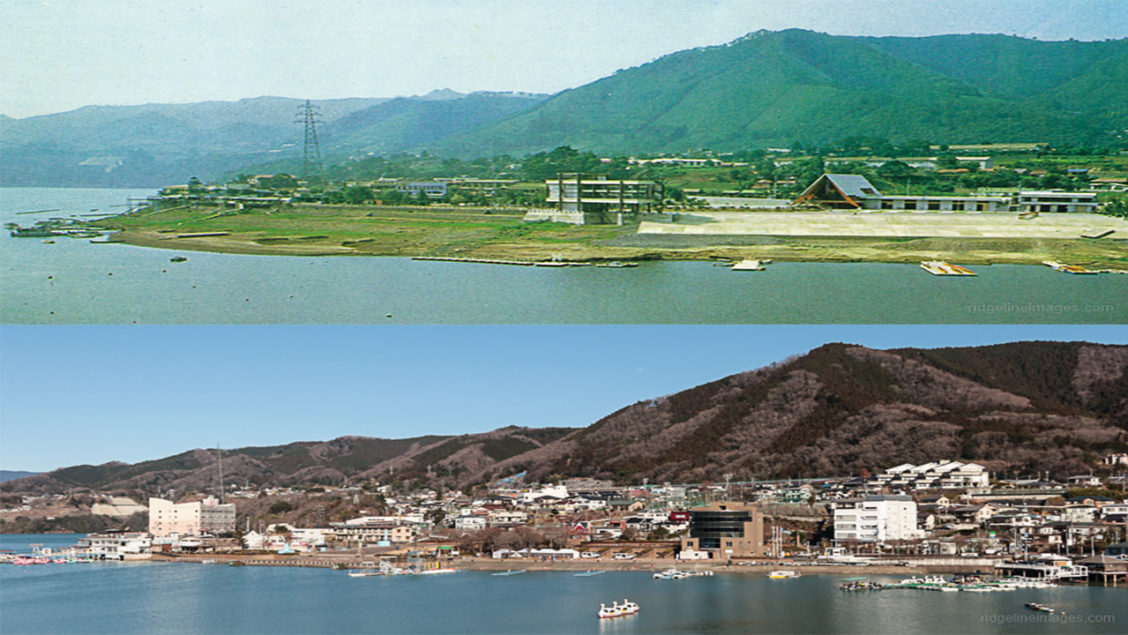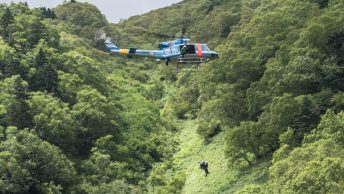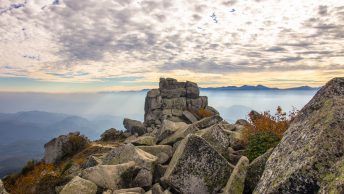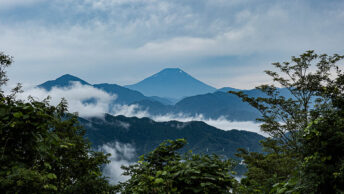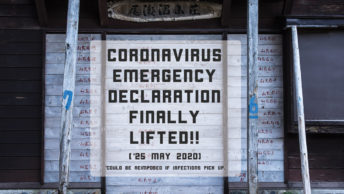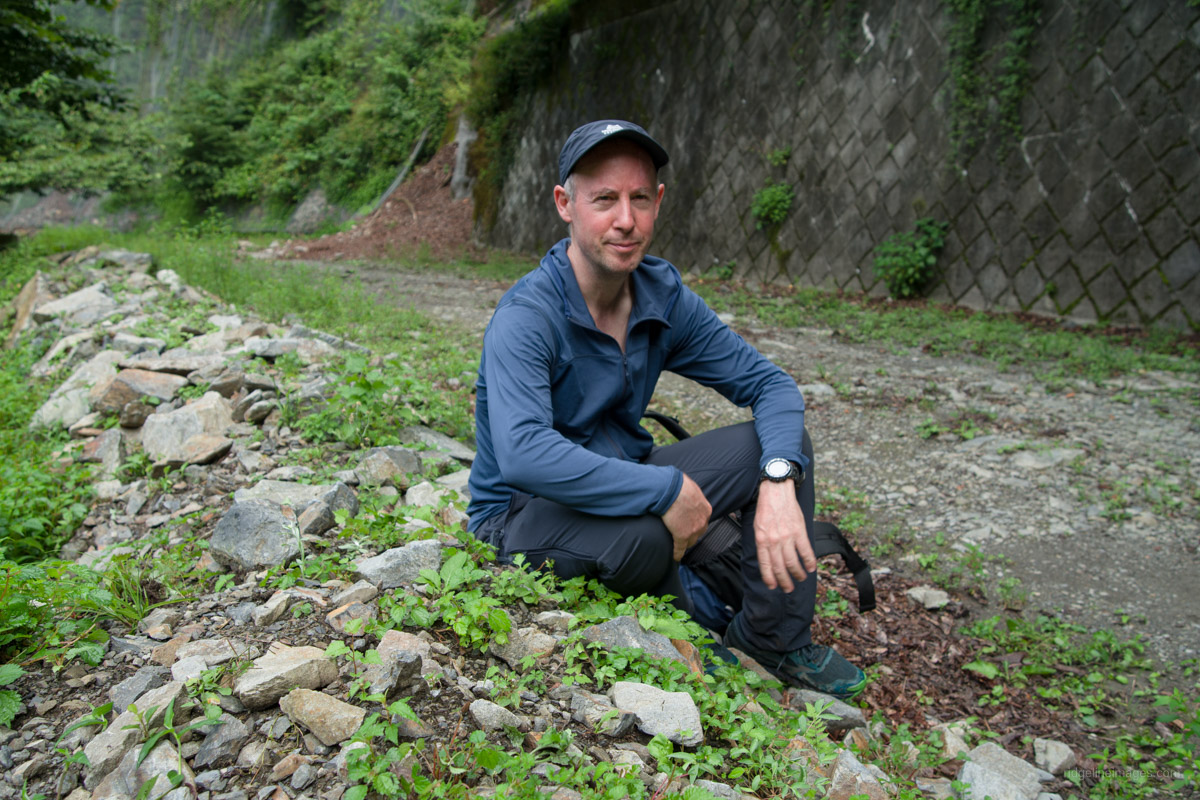Venue for the Canoe Sprint at the 1964 Tokyo Olympics
Recently I read Roy Tomizawa’s terrific book; 1964 – The Greatest Year in the History of Japan: How the Tokyo Olympics Symbolized Japan’s Miraculous Rise from the Ashes. In one chapter he recounts the story of Hungarian canoeist Andras Toro who faces a stark choice between either earning a podium finish and returning to his home country a hero or not placing and defecting to the United States. I won’t spoil it other than to say the canoeing events were held on Lake Sagami under the watchful gaze of Mt. Jinba in Kanagawa Prefecture.
Lake Sagami was created by damming the Sagami River for hydroelectric power and recreational use such boating and fishing. Completed in 1947, it was first artificial reservoir completed in the post-war period in Japan. From October 20 to 22, Sagamiko earned some international notoriety as it paid host to canoeing events at the 1964 Summer Olympics. A total of 167 kayakers and canoeists from 22 countries participated (134 men and 33 women) in seven events including the men’s K-4 1000m (kayak four) which made its Olympic debut at the 1964 Games.
A drawback was Lake Sagami was situated 58 kilometres from the Yoyogi Olympic Village and took around 90 minutes to reach by bus. As the distance between the main Olympic Village and the lake was considered inconvenient for daily transportation a detached Village was built at the lakeside for the crews. The protagonist in the story Andras Toro apparently delighted in the idyllic setting describing the misty shoreline as “beautifully surreal” according to the author.
Reading about the canoeists exploits at Sagamiko piqued my interest and made me wonder if any remnants of the 1964 Olympic course remained. Some internet searching appeared to uncover one structure that had endured the intervening years in rather fine condition namely a glassed five-storey finish tower. Fashioned from steel girders and corrugated iron it sits on the diminutive Maruyama a small island just off the water’s edge that somehow managed to survive the inundation. The tower can only be reached by boat and was for the purposes of officials during race meets. However, I’ve later learnt contrary to some Japanese information sources that it was not in fact used during the Olympic Games, because it had been built for a 2,000 metre race course.
Nearby the finish tower I took a snapshot of the Sagamiko Park foreshore for a then-and-now comparison of the Tokyo Olympic canoeing venue. Not surprisingly the contrast is stark with a transmission tower being the only detail remaining after 56 years. In 1994 a new management building and boathouse was completed thus eliminating the last vestiges from lakefront. In 2020 the canoe sprint events will be held is less scenic surroundings at the Sea Forest Waterway in Odaiba though much closer to the action.

Sagami Park foreshore 1964. Image: Sagamihara City Archives.
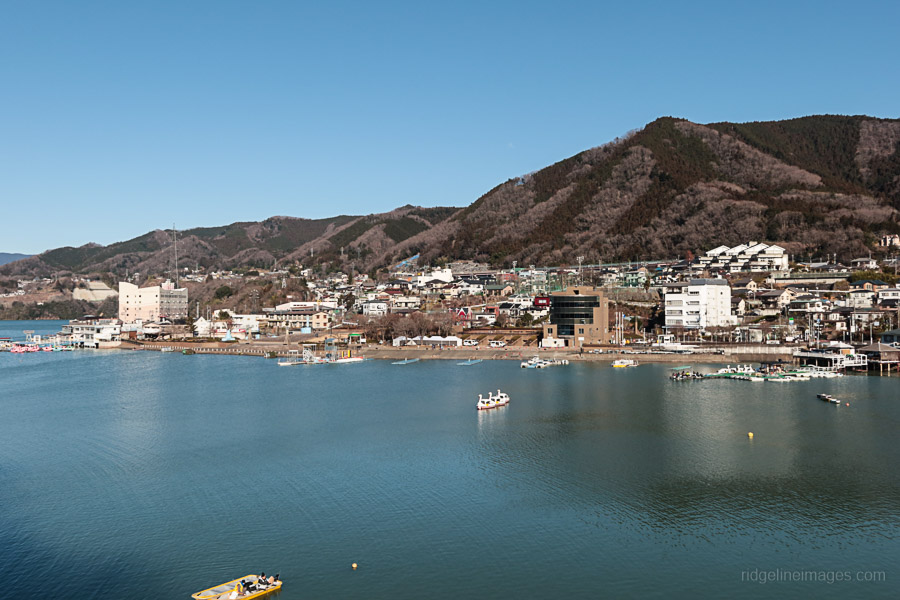
Sagami Park foreshore 2020.

Then-and-now comparison with the Arashiyama Bridge in the backdrop.

Five-storey finish tower on Maruyama Island.
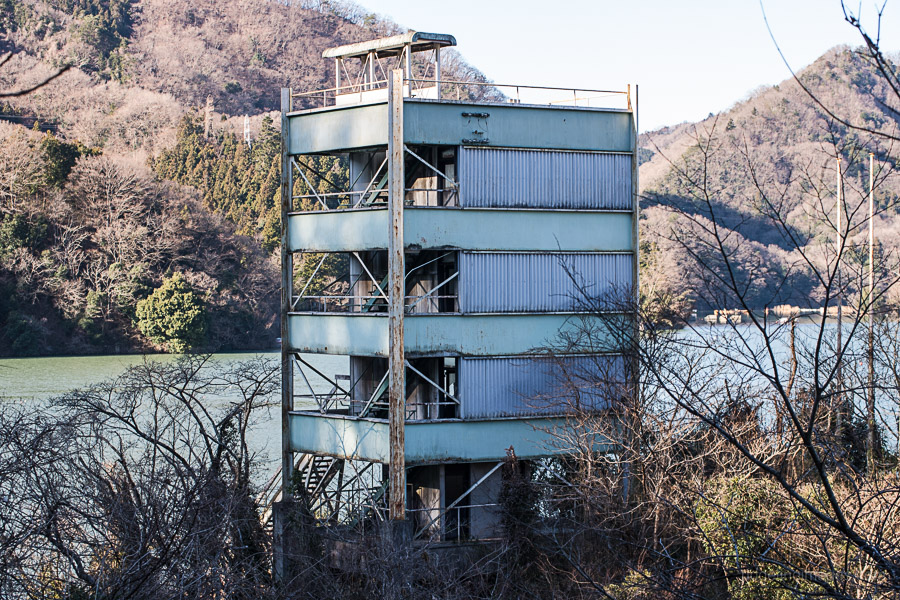
Close up of the finish tower.

Diagram of current 1,000 metre course outside the Lake Sagami Rowing Center.

The start of a canoe race. Image: Games of the XVIII Olympiad, Tokyo 1964 / Report
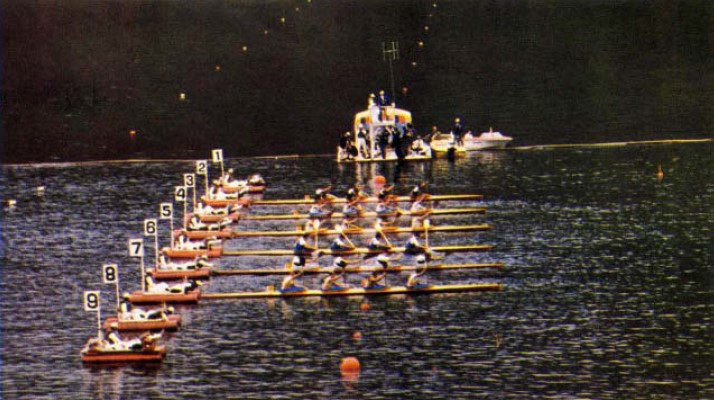
The start of a canoe race. Image: Games of the XVIII Olympiad, Tokyo 1964 / Report
